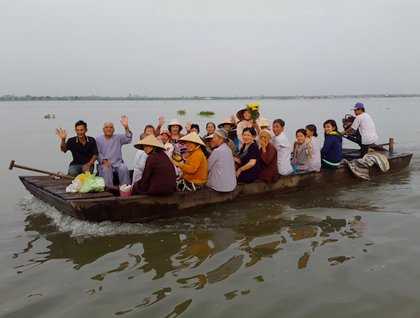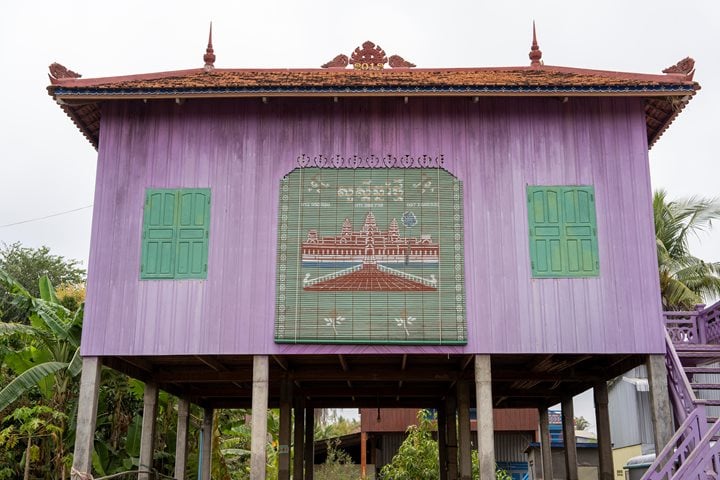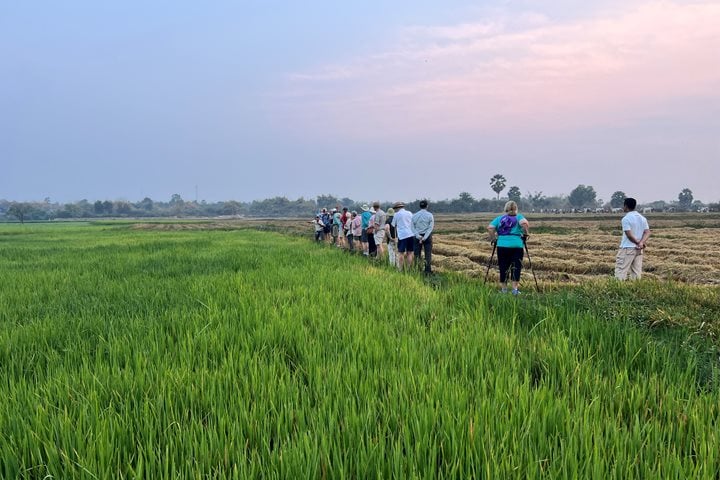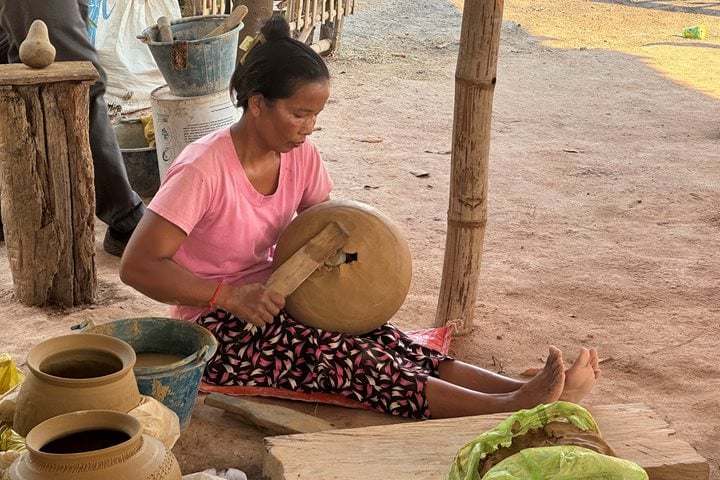As the sun rises over the Mekong Delta, we are anchored near Binh Thanh, a seven-mile long island with a population of 23,000. Boarding small local embarkations called sampan, we travel on small channels past floating houses, water hyacinths gardens, and fish farms. Irrigation channels are bringing the sediment-laden waters of the Mekong to countless vegetable and fruit gardens across the island. After letting a local ferry leave the dock with dozens of passengers and motorbikes, we land and explore the local village.
A few days into the Vietnamese New Year, dedicated to the Monkey, signs of celebration are everywhere, with golden flowers in front of every house and the loud sound of drums and cymbals. Children are on school holidays and running everywhere while other villagers quietly recover from days of celebration. Across the road from a new kindergarten is the spiritual center of the village, a temple used by the community to worship the gods of agriculture and their ancestors. Inside, an interesting juxtaposition of antique dragons, colorful red and gold banners, and even a couple of Christmas trees! The two keepers of the temple, aged 74 and 80, introduce themselves and give us a short talk about their daily life on this island, the changes in policies and the economic development of their country over the last decades. We learn that, while the government remains communist in essence, people have access to affordable universal healthcare and quality education.
Leaving the temple, we stroll in along the concrete walkways past gardens filled with bonsai trees. The island is known for its reed mats production, and we get the chance to observe how these are weaved using very simple materials.
Soon after returning to Jahan, Stéphane De Greef, our cultural expert, gives a 30-minute presentation on landmines and explosive remnants of war in Cambodia, explaining the origin of the problem, the extent of the contamination, and the current demining process.
In the afternoon, we reach the town of Cai Be, another market hub known for its floating fruit and vegetable markets. Disembarking in the hamlet of Phu An, we spend an hour in a local family-owned workshop producing a wide variety of local products. Using rice husk as fuel, a man produces “pop rice” before mixing it with palm sugar and ginger to produce a delicious cake. In another corner a man is cutting caramels made of palm sugar and coconut milk into square sweets using a giant cleaver while two women are hand-wrapping them into rice paper. This rice paper is also produced on the premises by yet another skillful woman. And then, there’s the local rice wine, a fruity sake popular all across Southeast Asia! One, two, three… YO! Bottoms up!
As the sun sets, we celebrate our successful journey along the Mekong with a cocktail party and prepare ourselves to discover the economic capital of Vietnam, Ho Chi Minh City, also known as Saigon…







